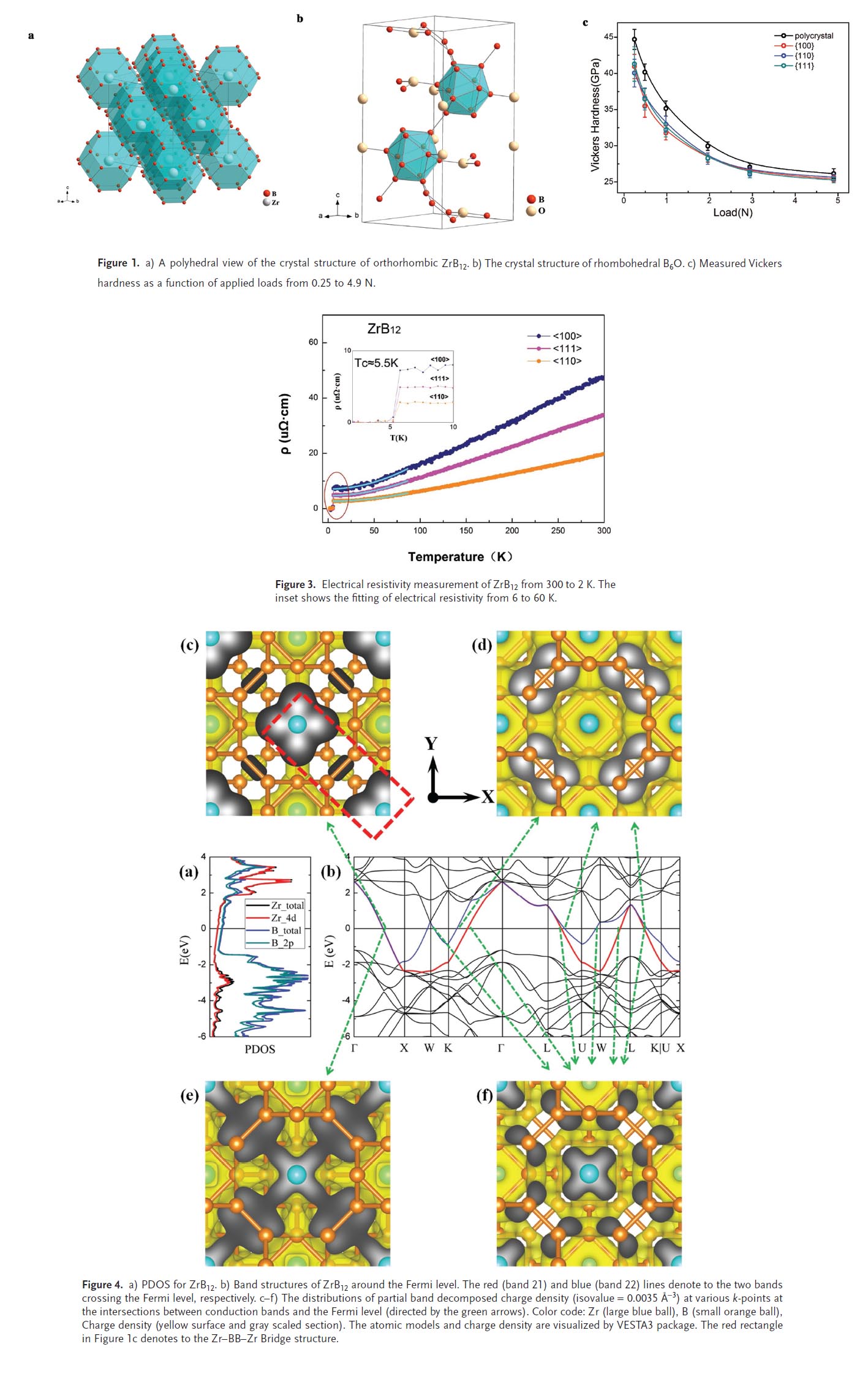超硬硼骨架构造的高速导电通道
(Ultrastrong Boron Frameworks in ZrB12: A Highway for Electron Conducting )
T. Ma, H. Li, X. Zheng, S. M. Wang, X. C. Wang, H. Z. Zhao, S. B. Han, J. Liu, R. F. Zhang, P. W. Zhu, Y. W. Long, J. G. Cheng, Y. M. Ma, Y. S. Zhao, C. Q. Jin and X. H. Yu
Advanced Materials 29, 1604003 (2017)
The elastic/plastic and electronic properties of single crystal and polycrystal ZrB12 have been studied by experiments and first principle simulations. Under the load of 0.25 and 0.49 N, the Vickers hardness of polycrystalline ZrB12 exceeds 40 GPa, suggesting the very hard property at small load. Under the load of 4.9 N, the measured Vickers hardness decreases and saturates at ≈27.0 GPa, which is slightly higher than the well-known ReB2, WB3. Revealed by first principle simulations, the ideal shear strength of ZrB12 can be as high as 34.5 GPa (B6O 38.0 GPa) because the frameworks are constructed with very high symmetrical B–B clusters. In addition to the high strength, ZrB12 also exhibits superior metallic behavior with ultralow electrical resistivity ≈18 ???cm, and Seebeck coefficient ≈2.0 ?V?K?1 (RT) both of which are comparable to that of Pt. First principle simulations show that the extensive B–B covalent network in ZrB12 can form delocalized ?-bonds, which generate extensive conducting channels for valence electrons by contacting Zr 4d orbitals. Such delocalized hybridization of electronic state between valence-bonding framework and doped transition metal provides us an insight to design metallic-hard materials. The combination of excellent mechanical and electrical property of ZrB12 can greatly extend the functions in many fields such as hard coatings or anvils of large volume press.

